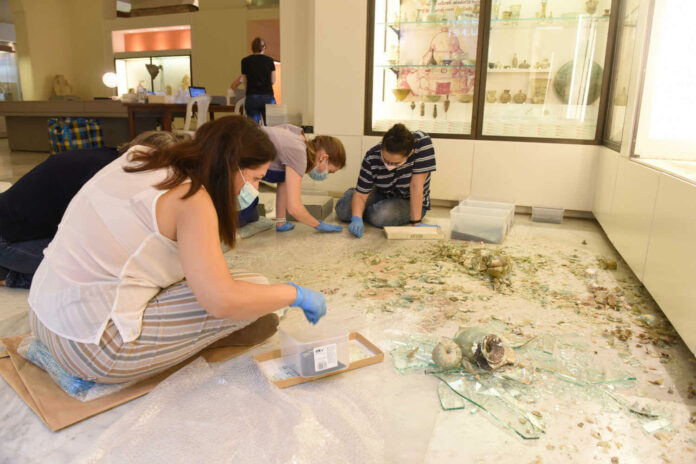
The British Museum, with the support of The European Fine Art Foundation (TEFAF), announced an important project to restore eight ancient glass vessels which were severely damaged in the Beirut port explosion in Lebanon on 4th August 2020.
The vessels, from the Roman and Islamic periods, were on display in the Archaeological Museum at the American University of Beirut (AUB) when the explosion took place. The case they were in blew over from the force of the blast, shattering the glass objects. This new collaboration will see hundreds of the glass fragments painstakingly pieced back together and restored at the conservation laboratories at the British Museum in London.
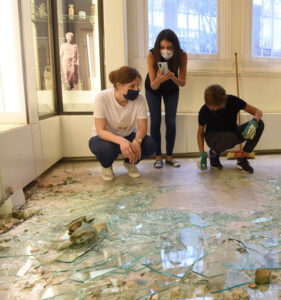
Eight Ancient Glass Vessels Will Be Restored in London
The AUB Archaeological Museum lay 3.2 km from the port explosion, and sustained heavy damage to its windows and doors. The case the vessels were displayed in contained 74 Roman, Byzantine and Islamic period glass vessels. Most vessels were shattered beyond repair with only 15 being identified as salvageable. Of these, only eight are safe to travel to the British Museum, which has the facilities and expertise to restore and conserve these items.
Hartwig Fischer, Director of the British Museum, said: “Like the rest of the world, we looked on in horror at the devastating scenes in Beirut in August last year. We immediately offered the assistance of the British Museum to colleagues in the city. As we mark one year since the tragedy, we’re pleased to be able to provide the expertise and resources of the British Museum to restore these important ancient objects so they can be enjoyed in Lebanon for many more years to come.”
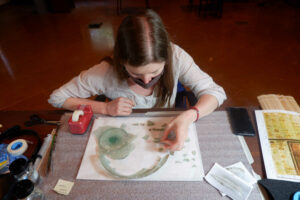
Ancient Glass Puzzle-Work in Beirut
After the blast, Claire Cuyaubère, a conservator from the French Institut national du patrimoine oversaw the initial work by Archaeological Museum staff to carefully collect and categorize the shards of ancient glass from the mixed debris, which included glass from the display case and surrounding windows. She returned to Beirut in July 2021 to lead the “puzzle-work” of this material, identifying and matching broken shards from each vessel, and identifying those suitable for shipment to London. The puzzle-work was supported by the Friends of the Middle East Department at the British Museum.
Jamie Fraser, Curator for the Ancient Levant and Anatolia at the British Museum, supported by HENI, said: “It is a privilege to collaborate with the AUB Archaeological Museum on this remarkable project. The glass vessels have survived several disasters and conflicts over the last 2,000 years, only to be shattered by the port explosion in 2020. Their restoration reflects the resilience of the staff at the Archaeological Museum, and the importance that Lebanon places on its rich cultural heritage”.
Hidde van Seggelen, TEFAF Chairman, said: “The destruction of these works of art was a terrible consequence of a larger tragedy for the people of Beirut. We are proud to support the restoration of the glass vessels through TEFAF’s Museum Restoration Fund, as these objects hold immense historical, artistic and cultural significance. Their return to their rightful form is a powerful symbol of healing and resilience after disaster.”
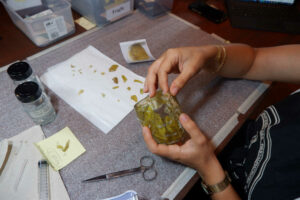
Once the vessels are fully restored, they will go on temporary display at the British Museum before traveling back to Beirut.
The eight objects are hugely important in telling the story of the development of glass-blowing technology in Lebanon in the 1st century BC, a period which saw glass production revolutionized. This technique enabled the mass production of glass objects in different forms, making an elite material available for common, domestic use. Six of the eight vessels identified for restoration were made by early glass-blowing technology and show experimentation in function and form. Two other vessels date to the late Byzantine-early Islamic periods, and may have been imported to Lebanon from neighboring glass manufacturing centers in Syria or Egypt.
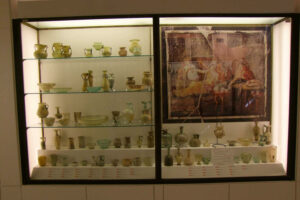
Prof Nadine Panayot, Curator of the AUB Archaeological Museum, said: “The loss of many glass tableware vessels dating back to the Roman period, some as early as the 1st century BC, represents a priceless cultural loss for Lebanon and the Near East. We are extremely grateful for the British Museum’s contribution to the restoration of eight of the glass vessels of the AUB Archaeological Museum that were shattered by the Beirut port explosion. My thanks go to TEFAF as well for their generosity and their support of the project.”
Sandra Smith, Head of Collection Care at the British Museum, said: “Glass is a very difficult material to reconstruct, not least because the sherds flex and ‘spring’ out of shape and have to be drawn back under tension to restore the original shape. Doing this for hundreds of pieces is a delicate process but our world class facilities and highly experienced conservation staff will ensure these items are preserved to exceptional standards.”
For more information, visit the website of the British Museum or the TEFAF website.
On the British Museum Blog you can find further news about the museum and collaborations.
The TEFAF regularly organizes international fine art fairs, due to the COVID pandemic the 2021 fair will be again an online fair.



